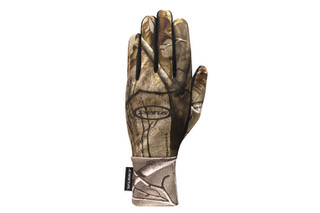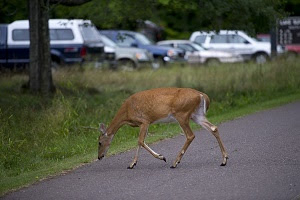By Glen Wunderlich
There I was, totally involved in the comfort of a portable blind with only a few days left in the regular firearms deer season. I had yet to tag either a buck or a doe, although both tags were in my pocket with numerous opportunities already behind me.
A silhouette deer decoy was positioned in the field about 80 yards from the blind in an effort to divert attention of any whitetails that may appear. As two groups of deer entered the field, none of them noticed my devious accomplice; they were too busy nibbling on the whitetail clover afoot.
The group of seven deer included at least two adults and one alert doe finally saw what appeared to her as a stranger in the vicinity. It was game on! The decoy was performing its magic and the matriarch pointed its long nose toward the unwelcome intruder. Step by step, with its neck stretched as far as possible, the group’s leader was on high alert. Soon, a second mature doe got the message and joined in the stare-down – both about 40 yards in front of me without a clue as to my existence or intention.
This wouldn’t have been a chip shot; rather it was a gimmie, plain and simple. The more inquisitive deer kept up their deliberate pace until they were within mere feet of the decoy, where I had placed a bit of scent to fool them, if they got too close. The strategy paid off. and as the curtain of darkness descended upon the scene, the entire group was there feeding alongside the great pretender.
Sometime afterward, I questioned myself as to why I held fire. After all, the deer had fully cooperated and were in my lap. The answer was simple: I did not want the excitement to end. And, that may be the difference between those that must bait or quit and me.
And, then I thought about the politicians that have voted in favor of House Bill 4687, which would bring back baiting in spite of years of research by wildlife biologists; the hasty maneuver would certainly contradict what we have come to know and believe. And, I thought of how we citizens bought into granting authority to experts by overwhelmingly voting to authorize the Natural Resources Commission (NRC) to make decisions about hunting in year 1996 by a 2/3 majority.
I am not alone. Representative Gary Howell (R) of North Branch agrees: “We are now on the edge of violating the spirit of that proposal. The truth is we ought to let the proper authorities make these decisions. We as politicians really are not particularly qualified to make these scientific decisions.”
Governor Whitmer has indicated she will veto the bill that would not take effect this season anyway. This is not only a matter of principle but a matter of the future of deer hunting in Michigan. Yet, I’ve not heard from one politician, who has staked his or her position on the shifting sands of politics, as to why we were all so naïve back in 1996. Just how did the NRC become so stupid, while the politicians became so smart?







